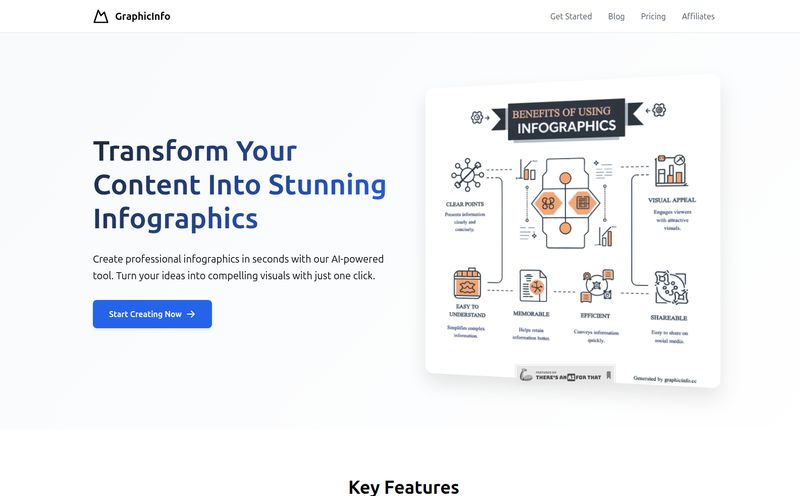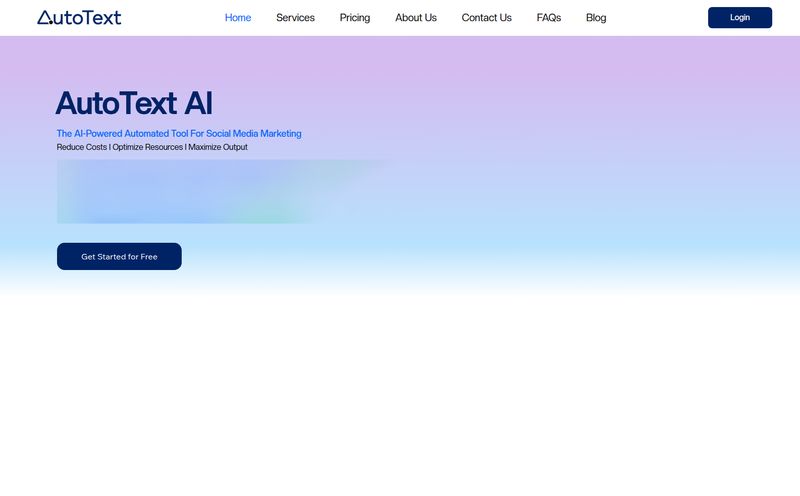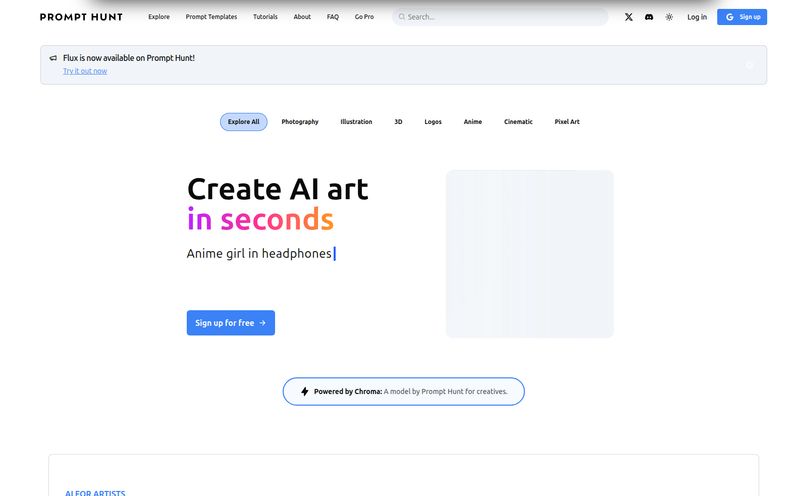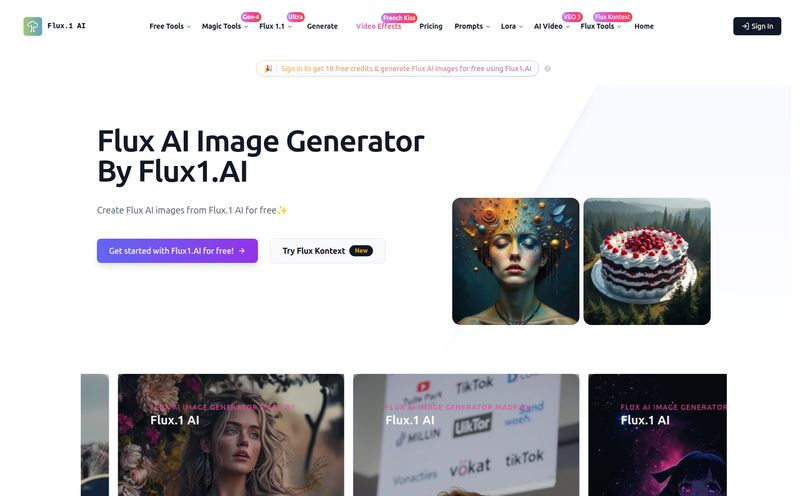I remember the early days of the AI art explosion. It felt like you needed a souped-up gaming PC, a PhD in computer science, and a secret handshake to get into the right Discord server just to create a half-decent image. We were all wrestling with complex commands, installing command-line tools, and trying to figure out why Stable Diffusion kept giving us people with seven fingers. Fun times, but... not exactly accessible.
Fast forward to today, and the game has completely changed. The power of massive AI models is no longer locked away in techie basements. Now, it’s sitting right on your phone. And that brings me to an app I’ve been playing with recently: Pocket Paint. The name itself is a promise, right? A simple, portable way to create. But does it deliver? Let's get into it.
First Impressions: Is Pocket Paint Really That Easy?
Okay, so the big claim on their App Store page is that it's the "easiest way to create art from your phone with the help of generative AI. No experience required." That’s a bold statement in a field that's famous for its learning curve.
So I downloaded it. The app is tiny, by the way—only 24 MB, which is a breath of fresh air in a world of gigabyte-sized apps. Opening it up, the interface is... clean. Almost surprisingly so. There aren't a million buttons or confusing settings. It seems to be built around a single, focused idea: you type what you want to see, and the app makes it happen. The screenshots show a simple prompt box, some suggested styles, and a gallery of creations. It genuinely looks like something my mom could use without calling me for tech support, and I mean that as the highest compliment.
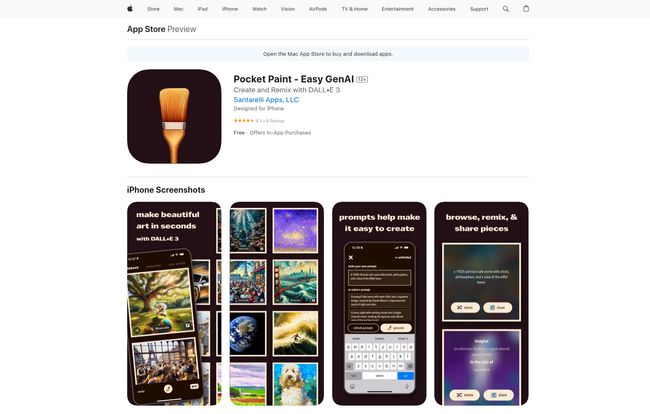
Visit Pocket Paint
This approach is smart. It removes the initial wall of intimidation that stops so many people from even trying generative AI. It’s less like opening up Photoshop for the first time and more like opening up a new box of crayons. You just want to start making stuff.
The Engine Under the Hood: Why DALL-E 3 Matters
So, what’s actually doing the heavy lifting here? Pocket Paint is powered by OpenAI's DALL-E 3. If you've been in the SEO or content world for a minute, you know that name. DALL-E 3 was a huge leap forward from its predecessors. It's notoriously better at understanding and following complex human language in prompts. You can ask for “a photorealistic image of an astronaut riding a horse on Mars” and it won't just throw a random astronaut and a horse into a red landscape. It gets the relationships between the concepts.
This is crucial for a mobile app aimed at beginners. You don't have to learn the arcane art of 'prompt engineering' to get a decent result. You can just... describe what you want. I also noticed in the app’s version history that they’ve added “DALL-E 3 Turbo,” which suggests they’re using the latest, fastest versions of the model. That means less time waiting and more time creating—a big win for mobile users who aren't known for their patience.
Crafting Your First Masterpiece: The Prompting Experience
The app seems to give you two main pathways for creation. You can either use their pre-made prompts and styles or write your own from scratch. The pre-made prompts are like a set of helpful training wheels. They give you a feel for what’s possible and how to structure a request for a certain aesthetic—cyberpunk, watercolor, photo-realistic, you name it.
Then there’s the feature to “browse, remix, & share pieces.” This is more important than it sounds. Being able to see what other people have made and the prompts they used to make it is one of the best ways to learn. You can take a prompt you like, tweak a few words, and see what happens. It turns creation into a conversation, a collaborative game. It lowers the stakes and encourages experimentation, which is the heart and soul of creativity, isn't it?
The Big Question: What's the Catch? (And What's the Cost?)
Alright, nothing is ever perfect. As a professional blogger, I’m naturally skeptical. So where are the trade-offs? And what's this going to cost me?
The Pricing Breakdown
The app is free to download, but there are in-app purchases for something called "Render Pro." Here’s what the App Store lists:
- Render Pro Weekly: $2.99
- Render Pro Monthly: $4.99
- Render Pro Yearly: $24.99
Now, the app page doesn't explicitly state what "Pro" gets you, but based on industry standards, we can make a pretty solid guess. It almost certainly means unlimited or a very high number of image generations, faster processing, higher resolution downloads, and probably the removal of any watermarks or ads. Honestly, five bucks a month for what is essentially unlimited access to a top-tier DALL-E 3 model on your phone feels pretty reasonable. Running these models costs money, and this pricing seems more than fair compared to buying credits on other platforms.
The Potential Downsides
So what about the limitations? A few things come to mind. First, simplicity is a double-edged sword. If you’re a power user who wants to fine-tune LoRAs, use ControlNet, or dial in 20 different parameters, this is not your tool. Pocket Paint trades that granular control for ease of use. For its target audience, that’s a feature, not a bug.
Second, you are at the mercy of DALL-E 3's own limitations. That includes its content filters and inherent stylistic biases. You can’t generate anything too risqué, and sometimes AI models have a certain… look that can be hard to shake. Finally, the level of deep customization isn’t clear. Can you feed it an image reference? Can you use negative prompts to exclude things? These are the kind of advanced features that might be missing for the sake of simplicity.
Who Is Pocket Paint Actually For?
After looking it over, I have a pretty clear picture of the ideal Pocket Paint user. This app is perfect for:
- The AI-Curious Beginner: Someone who hears about AI art but is intimidated by the complex tools.
- Social Media Managers & Bloggers: Need a quick, unique featured image for a blog post or an eye-catching graphic for an Instagram story? This is way faster than scrolling through stock photo sites.
- The Casual Creator: Anyone who just wants to have fun and make cool-looking stuff without a huge commitment. It's a creative outlet you can use while waiting for the bus.
Who is it not for? Professional digital artists who need precise control over every pixel and commercial studios that require complex, layered workflows. This is a sketchbook, not a full-blown industrial design suite.
FAQs About Pocket Paint
What exactly is Pocket Paint?
Pocket Paint is an application for iOS and macOS that lets you create images using generative AI. It's specifically designed to be easy to use and is powered by OpenAI's DALL-E 3 model.
Is Pocket Paint free to use?
The app is free to download and try. However, it offers "Render Pro" subscriptions (weekly, monthly, and yearly) that likely unlock unlimited generations, higher quality, and other premium features.
What AI model does Pocket Paint use?
It uses OpenAI's DALL-E 3 and, according to its update notes, the faster DALL-E 3 Turbo variant. This is a state-of-the-art text-to-image model known for its excellent understanding of prompts.
Do I need to be an artist or tech expert to use it?
Not at all. The app is built from the ground up for beginners, with a simple interface and helpful starter prompts. No prior experience is required.
Can I use Pocket Paint on my Android phone?
Currently, the listing is only on the Apple App Store, which means it's available for iPhone, iPad, and Mac computers with Apple Silicon chips. There is no information about an Android version at this time.
My Final Verdict: A Worthy Addition to Your App Library?
So, what's the bottom line? I think Pocket Paint succeeds brilliantly at what it sets out to do. It demystifies generative AI and puts a genuinely powerful creative tool into the hands of everyday people. It’s not trying to compete with the heavyweight champions of the AI art world; it's creating its own weight class—the featherweight division, where speed, agility, and accessibility are what count.
For a few bucks a month, you get a direct line to one of the best AI image models on the planet, all wrapped in an interface that won’t give you a headache. For anyone who's wanted to dip their toes into AI art but didn't know where to start, this is an enthusiastic recommendation from me. Go download it and see what you can dream up.
